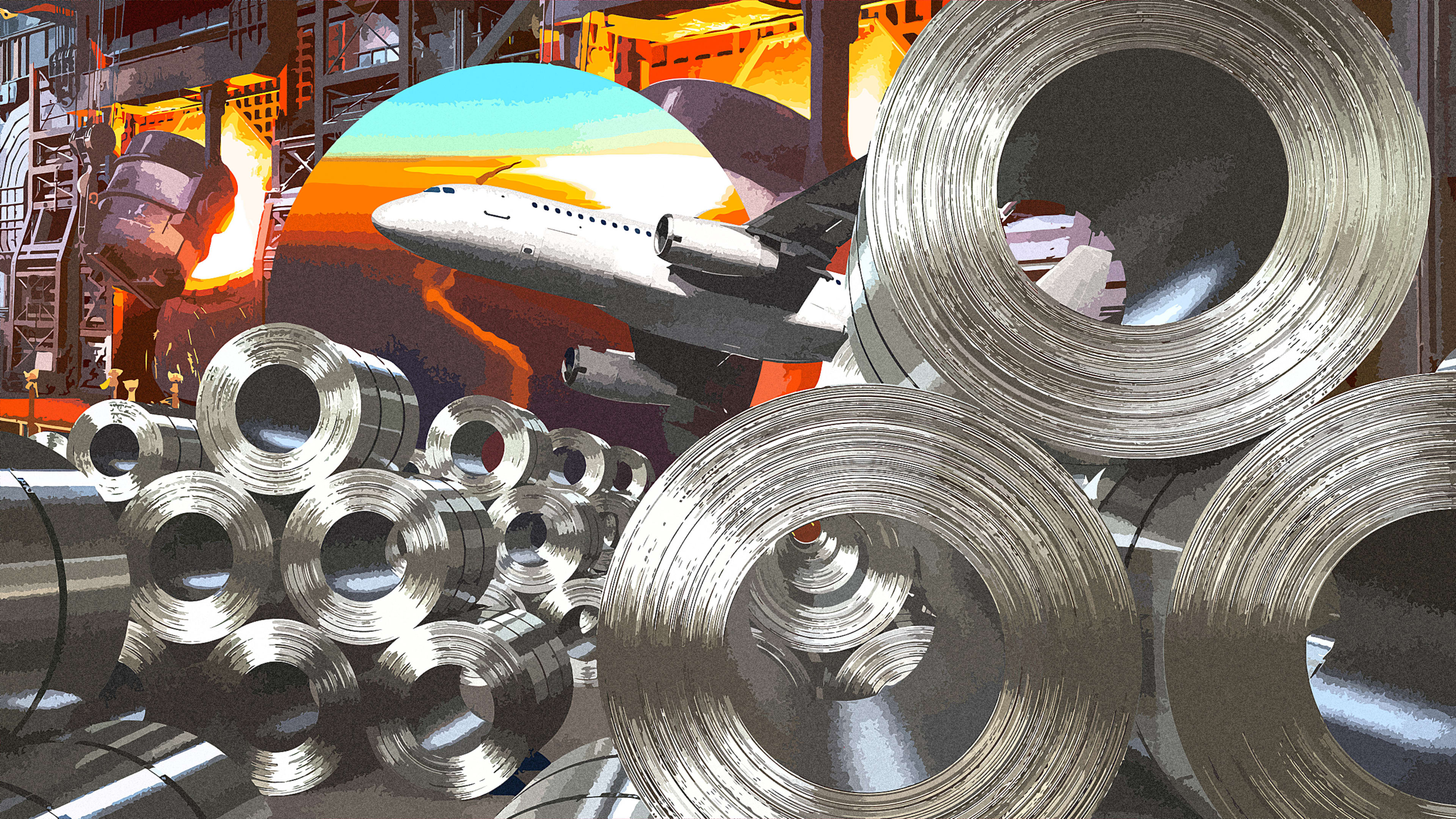Some ultra-polluting industries are especially hard to decarbonize. Most steel factories, for example, still run their energy-intensive process on coal, and the expensive equipment they use can last for decades. But it’s also possible to make zero-emissions steel: A Swedish manufacturer, SSAB, is using fossil-free hydrogen to make steel that Volvo plans to use in cars.
Now groups of companies in seven sectors—shipping, aviation, trucking, chemicals, steel, aluminum, and cement—are working together through a project called the Mission Possible Partnership to map out what needs to happen to get each sector to net-zero emissions by 2050. Two of the groups, focused on steel and aviation, just released their strategies.
“Steel is really exciting, because the technology is actually available today,” says Cate Hight, chief operating officer of the Mission Possible Partnership. Steel production is responsible for around 7% of global emissions now, or nearly three times more than aviation. Some of that carbon footprint could shrink if demand is reduced. Longer-lasting products or lighter-weight cars, for example, mean that less raw material is needed in the long term. More steel could be recycled, as well. New steel can be made with “green” hydrogen that’s produced with renewable energy. It’s technically possible to cut emissions from the industry by 90% by 2050. But companies will have to move quickly now to be able to achieve that, building commercial-scale zero-emissions steel plants this decade and proving that they work so that they can be scaled up in the 2030s. It will cost around $6 billion annually to make the full transition, according to Mission Possible’s report.
Aviation, another hard-to-decarbonize industry, can feasibly phase out fossil-based jet fuel by 2050. On a business-as-usual pathway, that won’t happen; if companies just choose the lowest-cost options, aviation will fail to hit net zero by the middle of the century and will blow through as much as 10% of the entire remaining global carbon budget before then. But with investments of around $300 billion per year, the industry can succeed. In the short term, airlines can turn to biofuels or synthetic fuels that can be used inside current planes and fueling infrastructure. Electric planes with batteries could begin covering short flights by 2030. By 2050, hydrogen could cover as much as 25% of the industry’s energy demand.
Major companies in each industry are collaborating on the strategies. In the case of aviation, that includes airlines like Delta and United; startups such as ZeroAvia, which is working on hydrogen-electric plane technology; airports like Heathrow and San Francisco International; and governments. “No one really has the solution on their own, so it needs to be a dialogue,” Hight says. “And you need to cocreate the solutions.”
In the next step, the companies will make internal plans based on the strategies. It was important to go beyond yet another vague commitment to net zero, Hight says. “There’s becoming, frankly, an increasing amount of agitation from the environmental community, who’s saying, ‘Okay, great, there’s a lot of things you can commit to—we would please like to see some tangible progress,’ right?”
Because companies worked on the strategies themselves, that next step will be smoother. “One of the things that we thought was really important is that this was not just an academic exercise . . . but rather that it was a conversation with the companies about the real stuff that they’re grappling with today, and some of the real decisions that they’re contemplating making,” Hight says. “The fact that these companies that we worked with are kind of endorsing this as a path forward is a pretty good signal that this is a possibility. It’s a signal to policymakers that the industry can align around something, and let’s talk about how we put a policy in place to accelerate that.”
Recognize your brand’s excellence by applying to this year’s Brands That Matter Awards before the early-rate deadline, May 3.
